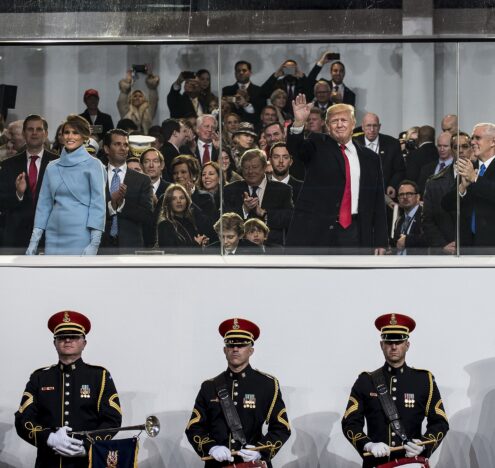On June 27, Mohammed Zubair, the co-founder of Alt News was arrested for a tweet that allegedly hurt religious sentiments. Upon hearing the case on July 20, the Supreme Court granted the 39-year-old journalist bail in all six cases the Uttar Pradesh police had filed against him, stating that there was no reason against him to be “deprived of liberty.” Civil society groups such as Amnesty International India, the Committee to Protect Journalists, International Press Institute, and many more viewed Zubair’s arrest as a continuation of a series of attacks intended to choke critical media outlets and repress press freedom.
Since the far-right Hindu nationalist Bharatiya Janata Party (BJP) took power in India in 2014, Prime Minister Narendra Modi’s administration has increasingly suppressed opposition using direct, indirect, and coercive measures. As journalists face arbitrary arrests, increasingly restrictive legislation, raids, spyware, and harassment, an atmosphere of fear and patterns of self-censorship have spread. India is currently ranked 150th out of 180 countries in the World Press Freedom Index by Reporters Without Borders. The Modi administration has repeatedly rejected the low ranking, accusing the monitors of “western bias.” The government set up an Index Monitoring Cell ostensibly to investigate the declining press freedom, but the committee instead focused on countering the claims. The ministry found the report’s methodology “questionable and non-transparent,” and claimed that Indian authorities actively guarantee the right to freedom of expression to the citizens. “The government does not interfere in the functioning of the press,” the ministry asserted. Independent monitors have countered these defenses, and a member of the committee also wrote a scathing takedown of the process and findings.
The north Indian state of Uttar Pradesh has been a locus of both rising communal violence and increasing crackdowns on the media. Marginalization and targeted attacks against the Muslim community have intensified since the Hindu nationalist government came into power. One of the key tools the Modi administration has used to silence the press is the Unlawful Atrocities (Prevention) Act (UAPA). Introduced in 1967, the act has been updated several times with stricter rules. In 2019, the amendment allowed authorities to deem an individual a terrorist without evidence and jail the accused for up to seven years. The anti-terror law has been labeled “draconian” by several advocates and international rights groups. According to the Indian ministry, in 2020 alone, 361 people were arrested and 54 convicted under UAPA in the state. The same year, for example, a 42-year-old Muslim journalist, Siddique Kappan, was arrested on his way to cover an alleged gang-rape and murder case of a 19-year-old woman who belonged to the marginalized Dalit community by four upper caste men, in Hathras village of Uttar Pradesh. Kappan has been languishing in jail ever since.
Uttar Pradesh (UP) is reported to be the second most dangerous state for journalists in the country, surpassed only by the Jammu and Kashmir region, which has been a conflict zone for decades. According to a report by the Committee Against Assaults on Journalists, UP has witnessed 138 total cases of persecution of journalists since 2017 — 48 journalists have been physically assaulted, 66 journalists booked or arrested and 12 journalists have been killed.
CRIMINALIZING THE MEDIA
In 2020, social activist-cum-journalist Zakir Ali Tyagi was picked up from his house at midnight by dozens of policemen in Uttar Pradesh’s Meerut city. He was arrested without a warrant for an alleged cow slaughter case that carries a sentence of 10 years in prison under the Uttar Pradesh Prevention of Cow Slaughter Act, 1955. The journalist believed the accusations were arbitrary: “I have been targeted for being a Muslim journalist and criticizing the BJP government in power,” Zakir said in an interview last month.
This was not the first time Zakir was intimidated. He faced harassment for taking part in the protests against the controversial Citizenship Amendment Act in 2019 and other rights work. In 2021, the UP police arrested him under the Uttar Pradesh Control of Goondas Act, 1970, which deems an individual a terrorist and allows detention for one year.
“To keep the journalists behind bars, the administration can go to any extent, as far as registering a false First Information Report (FIR),” the 23-year-old said. “Despite all the harassment, I continue to work here (in UP) but the upcoming journalists might not choose the same. They are already living in fear. Working in UP as a journalist is like walking on thin ice, if you do journalism, you will be killed,” he stated.
Another example is the “examination paper leakage.” In late March, the three journalists Ajit Ojha, Digvijay Singh, and Manoj Gupta were arrested after exposing a 12th-grade examination paper leak scandal that took place in the Ballia district of Uttar Pradesh. Ojha, who is a professor at a local secondary school and correspondent for Hindi language daily Amar Ujala alleged that the policemen grabbed him like a criminal and registered a FIR that declared him an accused in the case. “I was arrested at 12 PM from my office but the FIR was registered at 4:30 PM and the place of arrest is stated as city intersection at 6:30 PM. It also said that I was on the run when I was caught,” Ojha told The Wire. “I feared being killed in a fake encounter,” he added. When Singh and Gupta were imprisoned the next day, Singh said that there was no FIR registered against him but against “certain unknown chaotic elements and education mafia” and he found his name included in the investigation. The colleagues of detained journalists protested for days, finally forcing the policemen to release them.
“The Yogi [Adityanath] government hates the truth. When the paper leak news spread, journalists were made scapegoats as a cover-up for the actual story,” the 65-year-old Singh told The Wire.
The journalists were released after nearly four weeks when the Uttar Pradesh police failed to produce evidence against them.
The Press Club of India condemned the arrests of the journalists and stated:
“Of late it has been observed that the Uttar Pradesh government is going hammer and tongs to threaten and actually arrest those media persons who don’t toe the line of the government thinking over the issues of policy measures. And, the sycophant and more-than-eager Uttar Pradesh Police and bureaucrats don’t waste time in arresting media persons at the first available opportunity to please powers-that-be.”
CONTINUED HARASSMENTS
Several journalists who criticize the government of Uttar Pradesh Chief Minister Yogi Adityanath and highlight the suffering of the marginalized in the state face constant harassment. During the COVID-19 lockdown, senior journalist Vijay Vineet reported that children of the Musahar community, a largely impoverished group, were eating grass to survive in Modi’s parliamentary constituency Varanasi. He shared photographs of the dismal scenario, which spread widely across social media platforms.
“There was a lot of pressure from the government. As soon as my article was published, dozens of policemen were spread in my office. They had brought notice from the local administration claiming that the report is fabricated and the children are not eating grass but dal (pulses),” he said in an interview.
“Working in Uttar Pradesh as a journalist is like walking on thin ice, if you do journalism, you will be killed.”
The local administration “asked our organization to make changes in the article and I refused. They threatened to book charges against me for doing so. But I had a platform with me so I kept fighting,” Vijay asserted. The District Magistrate later set up an investigative team to prove that grass was indeed dal and the article allegedly “sensationalized a trivial issue.”
The journalist stood his ground. He then interviewed several scholars from the Agricultural department of the Banaras Hindu University and published an article stating the nutritional value of grass and its adverse health effects from consumption.
Vijay, who was then working with a local Hindi language newspaper Jansandesh Times as an editor, reached out to the Committee to Protect Journalists and other journalist bodies to speak about the threat of criminal charges and attacks. “At times we go numb out of extreme pressure. The situation here (in UP) is rather an undeclared emergency,” he added. In January 2021, Vijay was forced to resign from the workplace and was unable to find another job for several months. “None of the mainstream media houses in the state were ready to employ me because I wrote the truth,” he said.
Another instance involved Sanjay Sharma, the editor-in-chief and co-founder of 4pm, the only independent daily media based in UP’s capital city, Lucknow. The daily paper is known for sharp criticism of the state government. Sharma pointed to rising pressure against the media under the BJP: while the daily has always offered a critical perspective of the ruling government, the previous government, the Samajwadi Party did not interfere.
Since the BJP took control of the state, the incidents of intimidation against journalists have escalated. “The authorities’ targeting journalists, coupled with a broader crackdown on dissent, has emboldened Hindu nationalists to threaten, harass and abuse journalists critical of the Indian government, both online and offline, with impunity,” stated Reporters Without Borders and several other rights groups. “Within three months of the BJP government, my office was vandalized and I received a call from an official to negotiate by censoring anti-government content to get year-long advertisements for the newspaper. Denying this, an Economic Offences Wing (EOW) investigation was set up against me. They investigated my family bank accounts and raided the office multiple times,” Sharma said.
Despite the harassment, Sharma continued to work on the critical stories that his newspaper publishes. “I often get death threats because I write anti-establishment news,” he asserted. During the state election, Sharma’s YouTube channel 4pm News Network vanished overnight. After writing several emails to the online video platform, he approached the Supreme Court. The channel was then resumed after three days. Several rights groups including Committee to Protect Journalists, Reporters Without Borders, Amnesty International, Human Rights Watch, and others have asked for a fair investigation into the continuous harassment journalists face for their work.
“Uttar Pradesh’s bureaucrats have terrorized the state,” Sharma said.
ERODED DEMOCRATIC FREEDOM
In March 2017, after BJP’s win in the state, Chief Minister Yogi delivered a speech in which he “asked all the criminals to leave Uttar Pradesh.” In response, Zakir posted on Facebook, joking about the minister’s criminal records. He wrote, “Yogi said (in a speech) in Gorakhpur that all criminals should leave UP. I don’t have the audacity to remind Yogi of the total 28 cases registered against him, out of which 22 are serious in nature.” During the same period, the Uttarakhand government recognized the revered rivers of Ganga and Yamuna as “living entities” and gave them the same legal status as human beings. The ruling was later put on hold. After the news broke out, Zakir posted a status on Facebook, that read “The Ganga has been declared a living entity, will criminal charges be initiated if someone drowns in it?” A few days later, he was forcefully picked up by policemen from his home and charged under the Information Technology Act and Sedition Law for both of the Facebook posts. The Information Technology Rules are another tactic the government uses to repress the press, they were introduced in 2021 to indirectly regulate digital news media. Zakir’s charges could have led to a jail term of three years, but he was granted bail after spending 42 days in prison. “Since my return from prison, I have tried to be more vocal which is why the administration has illegally searched my house several times and confiscated my laptop for days,” Zakir said in an interview.
In another case, Uttar Pradesh police arrested journalist Prashant Kanojia twice in two years for sharing social media posts that allegedly “disrupted communal harmony.” The arrests seriously questioned the freedom of expression of the citizens collectively. After scholars and journalists held several protests, the Supreme Court granted Kanojia bail, stating that “a citizen’s right to liberty has been infringed.”
The Supreme Court has been an important line of defense for journalists, but it too has been under threat. In their nine years in power, the BJP government has made several transfers of government employees, allocated cases to the benches “perceived to be politically biased” and placed several officials in decision-making positions that are in support of its present policies. Even though the Supreme Court appears to work independently, the political influence under which it operates has been seen in verdicts including the Babri Masjid demolition case verdict, Abrogation of Article 370 in Jammu and Kashmir, Implementation of NRC in the northeast state of Assam, and others.
Rajiv Yadav, General Secretary of Rihai Manch, a rights group based in Uttar Pradesh said, “Journalists in UP were attacked previously as well, but today, such a mindset has been formed that, opposing BJP government means opposing the country and the objector will be deemed a terrorist.”
JOURNALISTS KILLED FOR THEIR WORK
Some of the hostile crackdowns on journalists have even led to death. According to the Committee to Protect Journalists, 20 cases of murder against journalists remain unsolved, placing India 12th in the organization’s Global Impunity Index.
In 2020, Shubham Mani Tripathi, a 25-year-old journalist, was shot dead in broad daylight days after he exposed illegal sand mining in Kanpur city of Uttar Pradesh. The journalist, who worked for the newspaper Kampu Mail, had accused the ‘sand mafias’ of registering a fake case against him at the District Magistrate since his article was published.
Despite sending several emails to state authorities and informing policemen of the death threats that he has been receiving, no prompt action was taken. Then he was killed. Audrey Azoulay, director-general of UNESCO condemned Tripathi’s murder, saying, “I call on the authorities to bring the perpetrators of this crime to justice, which is essential to deter other criminals from practicing gunpoint censorship.” The media watchdog Reporters Without Border also released a statement to carry out an investigation on the case, “In this region of northern India (UP), the links between sand mafia bosses and local police chiefs mean that, when journalists are murdered in connection with their reporting, the police investigation is almost always closed without further action. The vicious cycle of impunity needs to be broken by means of legislation guaranteeing journalists’ safety.”
A year later, Sulabh Shrivastav, a 42-year-old journalist who worked for esteemed news platform ABP News, was thrashed and found mysteriously dead after covering an article on the local liquor mafia in Uttar Pradesh. Shrivastav had reportedly written a letter to the police a day before his death after sensing a life threat from the mafias and requested police protection. Though the police at first attributed the death to a motorcycle accident, the authorities later opened a criminal investigation into his death. “The Uttar Pradesh government needs to ensure that all threats to journalists are investigated fully and that critical reporting does not become a death sentence,” said Steven Butler, Committee to Protect Journalists’ Asia program coordinator in the statement.
Eighty-one percent of the murderers of journalists stand unpunished globally over the last 10 years, according to the Committee to Protect Journalists. The non-profit organization lists the killings of 89 journalists and media workers in India between the period 1992 to 2022 mostly due to covering a critical news report. India’s independent press is known to be vociferous and active. While the media has previously worked under many stressing situations, especially during the historic Emergency era in the mid 1970’s, the current crisis is nearly unprecedented.
Experts warn that the upcoming BJP re-election period may exacerbate an already catastrophic situation. Journalists, including Vijay Vineet, are worried. “In the coming years, I’m on the government’s target. The situation here [in UP] might get worse with time,” he warned.
Aparajita Ghosh is an independent journalist based in Mumbai, India. She covers human rights, minorities and cultures.




















